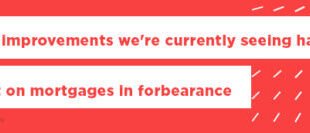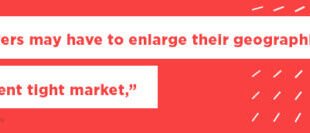Vaccines are being distributed. Hospitalizations seem to be on the decline in several areas. Now it’s time to think about life after the pandemic. What habits and cultural shifts are going to stay? Which ones are going to be thrown to the wind as soon as possible?
Experts at HousingWire believe that, for the most part, whatever happens in a crisis stays in a crisis. This is to say, they don’t expect that we will continue to bake our own bread and make time for afternoon walks once all businesses and commerce are back to full steam.
Even before COVID-19, there was a rise in people working from home. The option of WFH is one that has great appeal for many people and offers some benefits to employers as well. For example, a company may shrink its corporate footprint and save on facility costs if its workforce is distributed rather than centralized. And the appeal of WFH will only increase when the additional burden of schooling from home is lifted off working families.
But the question remains: With over $ 6 million in total home sales, will the WFH trend be big enough to dent this number and create the much-needed inventory to cool down home prices in certain areas and drive home prices up in others?
The expert’s guess is no. We tend to go back to the norm, and while working from home sounds great on paper, most of corporate America is probably not ready to fully jump on board.

Are we trapped in another housing bubble?
As reported by USA Today, some experts are worried by the rapid rise in home prices across the country. Some believe it’s another housing bubble.
Driven by historically low interest rates that make borrowing cheap and waves of people fleeing densely populated cities because of COVID-19, buying a home has become as competitive as it was during the mid-2000s.
“For over a decade, we’ve had a chronic lack of supply of housing,” said Marco Santarelli, chief executive of Norada Real Estate Investments in Laguna Niguel, Calif. “We need 1.62 million units a year to keep pace with organic demand, but we produce significantly less. We’re about 370,000 units short each year.”
Santarelli added that the supply imbalance will only get worse as more than 140 million millennials and members of Gen Z move into rental units and starter homes in the years ahead.
“About 52% of young adults from 18 to 29 are still living with their parents,” Santarelli said. “That’s the highest rate in over 110 years. These people have to go somewhere.”
An ease in mortgage lending standard in 2021
Economists and housing experts say mortgage lending standards will likely loosen in 2021, despite the increased risk of delinquencies ahead, according to HousingWire.
This shines a light on the growing disparities in the U.S. housing market. As one struggling group of homeowners braces for the end of forbearance and tiptoes through COVID-19-related economic turmoil, another demographic is more ready than ever to scoop up properties that become available.
If this happens, it would prove a dramatic contrast to that of the financial crisis, in which lenders tightened credit standards from 2007 through 2010, said Curt Long, National Association of Federally-Insured Credit Unions chief economist and vice president of research.
“Nevertheless, the fact that high-income households have fared so much better than low-income ones over the past year means that there may still be a lack of access to credit for low-income households even if underwriting standards do ease somewhat this year,” said Long.
Weekly mortgage rate update

Mortgage rates didn’t raise or lower as compared to last week, which could be advantageous for those who are looking to refinance. Although many people have already refinanced, experts suggest that lower income homeowners – those who could stand to benefit the most from lowering their monthly mortgage payment – haven’t yet taken advantage of the opportunity to do so.
The Freddie Mac weekly survey shows the average rate for a 30-year fixed mortgage is 2.73%, which is the same as last week, and down 0.72 points from this time last year.



